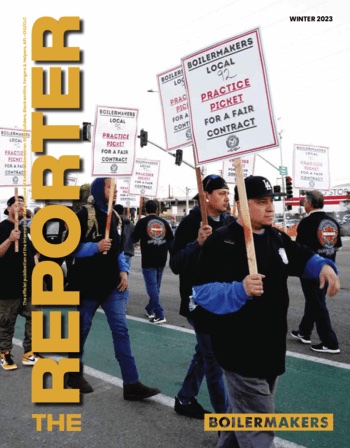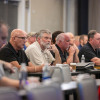“What other labor/contractor/owner relationship can you point to that has endured so long and accomplished so much?”
— IP Newton B. Jones
MOST announces marketing initiative
NATIONAL TRIPARTITE ALLIANCE partners attending the annual conference in Myrtle Beach, S.C., Oct. 10-15 celebrated a quarter century of cooperation and progress. Citing the milestone in his opening remarks, Intl. Pres. Newton B. Jones asked, “What other labor/contractor/owner relationship can you point to that has endured so long and accomplished so much?” He said the tripartite gathering “is more than an annual meeting; it is a relationship that is clearly in our best interests.”
Participants heard presentations across a spectrum of topics: a new MOST marketing program, coal and nuclear energy projects, environmental issues, economic and political challenges, the Boilermaker Delivery System, industry best practices, and other areas.
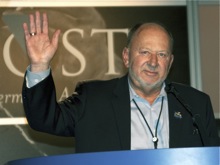
SAIP Brad Bradford discusses the new MOST marketing program.
SAIP Brad Bradford, chairman of the MOST Marketing Committee, introduced a new marketing initiative. He stressed that while MOST has long led the industry in programs that cut cost for owners and contractors, and enhance the skills of tradesmen, those programs have not received the exposure they deserve.
Bradford presented promotional video clips that include testimonials from Boilermakers, contractors, and owners about the benefits of MOST programs. Produced in conjunction with Martin Public Relations, the video is part of a strategy that also will include Web site development, promotional CDs, and print materials.
Boilermakers shine in largest coal plant project
Boilermakers “have been the key to our success on this project.”
— Peter DeQuattro, Prairie State Generating Co.
PETER DEQUATTRO, president and chief executive officer of Prairie State Generating Co., presented a virtual tour of the largest coal plant currently being built in the United States. The $5 billion Prairie State Campus, located in southern Illinois, about 50 miles east of St. Louis, is being constructed atop a new coal mine and includes two supercritical 800-MW units with advanced environmental systems.
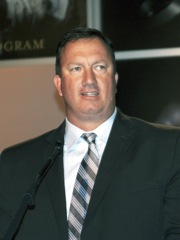
Peter DeQuattro, president and CEO of Prairie State Generating Co., describes their new coal plant in Illinois.
Now about 50 percent complete, the project is being managed by Bechtel Power Corp. and is being constructed with 100 percent union labor. Signatory contractors Babcock and Wilcox, Sterling Boiler, and Fisher Tank, are employing a total of nearly 1,000 Boilermakers at peak from Local 363 (East St. Louis, Ill.) and other lodges across the country. Boilermakers are projected to work about five million man-hours on the job constructing air quality control equipment, SCRs, dry precipitators, wet precipitators, wet scrubbers, and tanks.
DeQuattro said Boilermakers “have been the key to our success on this project. The scope of work being executed by the Boilermakers is big, it’s important, and it’s critical path.” Boilermakers will perform about 70,000 tube welds, complete numerous heavy lifts, and construct over eight million gallons of tank capacity during the project.
Nuclear power in North America still faces hurdles
Nuclear energy expertise “is…moving away from North America.”
— Duncan Hawthorne, Bruce Power
WHILE DOZENS OF nuclear power plants are being built around the world, prospects for a nuclear resurgence in the United States and Canada remain dim, according to Duncan Hawthorne, president and CEO of Bruce Power, and a frequent speaker at Boilermaker tripartite conferences.

Bruce Power’s Duncan Hawthorne reports on the status of nuclear power.
Hawthorne noted two recent announcements, one in the United States and the other in Canada, that highlight the obstacles to nuclear energy expansion in North America. In Maryland, Constellation Energy announced it would suspend efforts to secure nearly $8 billion in federal loan guarantees for a new unit at Calvert Cliffs after failing to reach agreement with the Department of Energy on loan fees. And in New Brunswick, the $1.4 billion refurbishing of NB Power’s Point Lepreau nuclear power plant has been pushed back for technical reasons.
Ballooning project costs, schedule overruns, and public opposition to nuclear energy remain major hurdles to new plant construction. Despite those concerns, Hawthorne said that worldwide “there is a massive amount of the population with no access to electricity,” and many countries are considering nuclear energy, especially in India and China. He said China is currently completing an average of one coal-fired unit a week and four nuclear plants a year.
Expertise and leadership in nuclear energy “is…moving away from North America,” he stated.
EPA official discusses new air standards
ROB BRENNER, AN official with the Environmental Protection Agency, discussed new air standards that will affect the electric utility industry as well as factories and refineries that use industrial boilers. Brenner is the director of policy and analysis for the EPA’s Office of Air and Radiations.
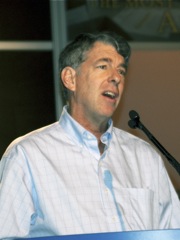
EPA’s Rob Brenner reports on new clean air rules.
Brenner said the Industrial Boiler MACT rule is slated to be finalized this winter. MACT stands for maximum achievable control technology. “These new regulations are going to require that major categories of stationary pollution sources — not just utility boilers, but also industrial boilers in other factories and refineries — [will] need to become cleaner.” Brenner added, “What these rules require is that for the large oil and coal and some of the biomass boilers, they have to put on the same high-quality controls that many facilities already have.”
Other air pollution rules being developed by the EPA will deal with industrial solid waste incineration, sulfur dioxide and nitrogen oxide pollution that crosses state lines (known as the Transport Rule), and a rule on hazardous air pollutants such as mercury, arsenic, and dioxin.
Brenner stressed that the Clean Air Act of 1970 and its amendments have achieved impressive results in public health, “preventing tens of thousands of premature deaths each year” while accounting for “trillions of dollars in health benefits for our country.” He said that despite predictions of widespread industry failures due to compliance requirements, the act has actually stimulated technology development and job creation since its inception. “The total benefit of the Clean Air Act amounts to more than 40 times the cost of regulation.”
IP Jones gives update on MOST Boilermaker Delivery System
MODERNIZING REFERRAL RULES and implementing the MOST Boilermaker Delivery System (BDS) were the focus of a presentation by Intl. Pres. Jones. The two topics go hand-in-hand. Before the Internet-based delivery system can go live, long-standing rules about how construction Boilermakers are referred to jobs must be updated. That work is nearing completion. Initial training on the BDS has already begun, and instructional videos for lodges and contractors are being developed.
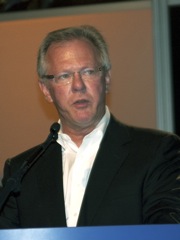
IP Newton Jones gives an update on the MOST Boilermaker Delivery System.
Jones said the BDS has the potential to rival Common Arc and MOST safety programs in its ability to save contractors and owners money and elevate productivity. The BDS “will create greater efficiency because it is an online system . . . and information will be stored in one place.”
The Web-based computer system will store member qualifications, job status, and other information. It will allow members to access and update their information and to indicate their availability and work preferences. It will enable contractors to place online job calls and will allow locals to more efficiently dispatch members to jobs. It will also provide efficient access to travelers. Jones estimated that, as a group, travelers will save more than $1 million each year in costs associated with traveling to different lodges in order to place their names on work lists. The BDS will allow travelers to post themselves to as many work lists as they wish in a matter of minutes from anywhere there is access to the Internet.
Jones said substantial cost savings are expected from a stiffer, more uniform penalty system. Member status — including placement on penalty lists — will be available to lodges and the International instantly. This capability and related referral rule changes are expected to virtually eliminate job-hopping and reduce chronic absenteeism.
Jones said the updated referral rules will also require that those on the primary work list maintain MOST certifications and complete skill updates within specific timeframes.
“The BDS is intended to build a better Boilermaker, build a better system for us to be able to track and understand how we’re doing,” he said. “We’ll have realtime reports available for Boilermakers nationwide.”
Jobs, hours “will come back,” says NACBE’s Bell
NACBE PRESIDENT WENDELL Bell (vice chairman and CEO of Enerfab), encouraged conference participants to think back about the progress the national tripartite alliance has made over two and a half decades and to look forward to a time beyond the current economic downturn and the current industry uncertainty.
Bell spoke about the importance of collaboration among the Boilermakers union, contractors, and owners, describing how that collaboration has led to such impressive MOST programs as Common Arc, drug testing, and safety training. “This is a time to catch our breath,” he said, “and to make the necessary changes for the future.” He cited referral rule modernization and the new Boilermaker Delivery System as the kind of changes that will prepare the alliance partners for a revival of the industry.
“When we come out the other side of this current economy, it will get better,” he said. “We will get [energy policy] legislation. The hours will come back. The jobs will come back.”
Industry expert urges adoption of best practices
“I challenge our leaders to make this industry strong again.”
— Wayne Crew, Construction Industry Institute
WAYNE CREW, DIRECTOR of the Construction Industry Institute (CII) at the Cockrell School of Engineering, University of Texas at Austin, explained his organization’s efforts to improve the delivery of capital facilities. CII is a consortium of owners, contractors, and academia formed in 1983. The group conducts research on construction productivity, identifies and measures best practices, and disseminates information to its members.

Wayne Crew, CII director, urges use of best practices.
Crew presented a sample of CII’s findings in the area of safety to illustrate how best practices impact project performance, drawing on data from CII member projects and other information. As might be expected, those findings revealed significant safety advantages where best practices are employed. Embracing best practices at the corporate level also enhanced project performance, he noted.
Crew urged conference participants to prepare for the time when the construction industry will “rise out of the ashes” of the current economic downturn. He asked, “What culture are we going to create, and what practices are we going to implement — those things that will improve our costs, our schedule, our quality, our predictability? Best practices work. I challenge our leaders to make this industry strong again.”
Erickson stresses utilization of MOST programs, other cost-saving opportunities
COMMON ARC EXECUTIVE Director John Erickson reviewed the creation of MOST in 1989 and its development through the years. He reminded conference participants that MOST’s early focus was on dealing with two main issues: welder testing costs and drug abuse. Now MOST boasts a robust set of 17 programs that deal with numerous industry challenges.
Erickson said the investment of time and money in MOST programs has produced impressive results and urged contractors to take advantage of the cost-saving opportunities. He reported that in 2009 alone, these programs were credited with avoiding 2,200 lost-time injuries, saving the industry nearly $400 million in direct and indirect costs. In the same year, Common Arc saved the industry over $230 million in redundant welder testing costs. Using MOST programs can save over $2.5 million on a 200,000 man-hour project and improve production by 2.7 percent, he added.
Erickson encouraged owners and contractors to take a more hands-on approach to dealing with absenteeism and improvements to value-added activities on the job. “The Boilermaker, I am sure, stands ready to work with you on absenteeism, to work with you on value-added aspects. And when you take a look at the dollars that can be saved by working together on those two very important tasks, I think we’re missing the boat if we don’t do something about it.”
Speakers address other issues
CONFERENCE PARTICIPANTS heard from speakers on a range of other topics, including key legislation, Boilermaker history preservation, and regional tripartite meetings.
Abe Breehey, Director of Legislative Affairs/SAIP, discussed issues impacting the construction industry. He said the recession, regulatory uncertainty, and political instability have caused owners to delay new projects. “Progress [in Washington] has been pretty limited. It’s hard to find the right coalitions of Democrats and Republicans to cut a deal on just about anything these days.” He said the defining issue for Boilermakers and the construction industry was “the collapse of the Kerry-Lieberman and sometimes Lindsay Graham” comprehensive energy and climate bill. (Graham initially supported the bill but later backed away from it.) According to Breehey, health care reform, along with the BP Deepwater Horizon oil spill in the Gulf, doomed the passage of a comprehensive energy bill in 2010.
Charles A. Jones, Director of the Boilermaker History Preservation Department (BHPD), presented a documentary about union Boilermakers. The film, which was completed last year and has been shown at other conferences, describes the role boilermakers played during the Industrial Revolution and how union Boilermakers have contributed to the growth and prosperity of the United States and Canada in more modern times. He said the opening scene in the film, which depicts 1930s-era Boilermakers performing riveting, made use of tools that were taken from the Boilermaker archives in Kansas City, Kan. The BHPD is actively engaged in preserving artifacts, photos, and other materials and also assists local lodges in setting up historical displays at their sites.
Area tripartite alliances provided summaries of their 2010 meetings. Making the presentations were, for the Northeast, IVP Sean Murphy; for Eastern Canada, IVP Ed Power; for the Ohio Valley, IR Marty Stanton; for the Upper Midwest and Gateway, IR Tony Palmisano; for the Great Lakes, IR Pat Stefancin; and for the Western States, IR Jim Cooksey.

